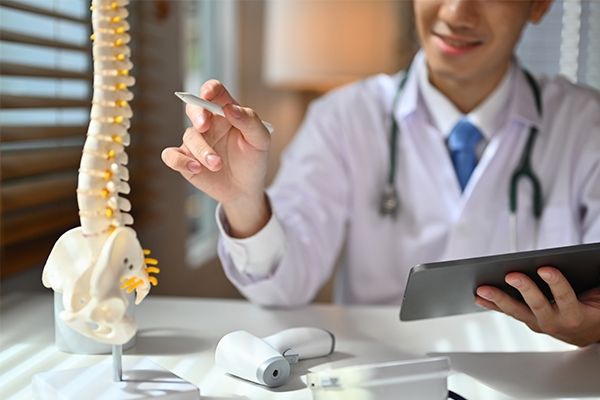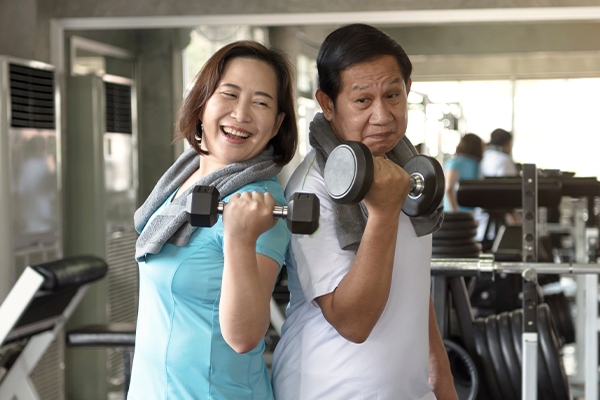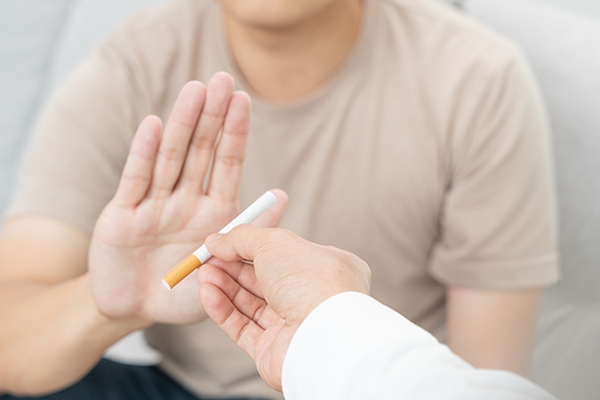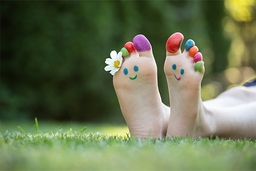Why Is Osteoporosis More Prevalent In Women?

Did you know that the human body is supported by 206 bones to ensure that its functions work properly? Bone density and strength improve until the late 20s, then steadily decline after the age of 35. This loss of bone density leads to osteoporosis.
Sedentary people should immediately change their ways. If you want to be able to move without the assistance of others until you are elderly, don't be indolent about it.
Walking, running, jogging, or swimming can all help strengthen your bones. Consume calcium-rich meals in addition.
Osteoporosis, often known as bone loss, is a disorder in which bones grow thinner, weaker, and brittle. According to the International Osteoporosis Foundation, around 21.2% of women over the age of 50 worldwide suffer from it concurrently with menopause.
Meanwhile, men are less likely than women to have osteoporosis, accounting for only 6.3% of the same age group. The average woman loses 10% of her bone mass after five years of menopause.
Asymptomatic osteoporosis is common until the patient develops hip, wrist, or other bone weakness. Fractures can happen to some people.
The cause is decreased bone mineral density due to menopause and suboptimal bone mass production throughout growth.
If you do not seek treatment, these symptoms will develop with time, leading to the appearance of the following symptoms:
- Backache caused by a shattered bone
- Hunched posture that causes the height to decrease. A compression fracture in the spine is the reason.
- Fracture becomes the most typical symptom of bone fragility. A fall or a bump, for example, may appear to be a minor cause.
How do I know if I have osteoporosis?
If you are a woman over the age of 65 with a fracture, you should have a bone health and osteoporosis test performed. The bone mineral density (BMD) test, often known as bone measurement, is the most commonly performed test. This test determines bone strength using extremely small levels of X-ray radiation.
Who is at risk for osteoporosis?
The following are risk factors for osteoporosis:
- Gender. Women are more susceptible to osteoporosis than men.
- Age. The chance of having osteoporosis increases with age.
- Family genealogy. If your sibling or parent has osteoporosis, you are likely to develop it as well, especially if your biological father or mother has a hip fracture.
- Bone structure and body weight. Men and women with tiny physical frames are at a higher risk of acquiring osteoporosis.
- Certain medicines. Long-term use of steroids (such as prednisone) can raise the chance of developing osteoporosis.
- Several medical diseases, including stroke and cancer, increase the risk of osteoporosis.
Is it possible to avoid osteoporosis?
It is critical to take action in order to avoid bone loss and maintain bone density. Among the things that can be done are:
1. Exercising
Regular exercise throughout life can lower the risk of developing osteoporosis. Do 30–40 minutes of physical activity every day of the week. Weight-bearing activities and resistance training are the two types of physical activity that are most beneficial to bones.

Physical activity will enhance muscle strength, balance, and fitness, as well as minimize the occurrence of bone prednisone falls.
Sports that have a significant impact or require quick movements should be avoided. Weight-bearing exercise, such as brisk walking or tai chi, is beneficial for bone mass growth.
Lifting weights, on the other hand, can assist in growing muscle mass and strengthening the bones of the affected limbs. Before you begin, speak with your doctor about activities that are appropriate for your physical condition.
2. Consume calcium-rich meals
Calcium-rich foods include low-fat dairy products, tinned sardines and salmon (with bones), broccoli, nuts or legumes, green vegetables, bread, cereal, and almond milk.

The daily calcium requirement for men and women aged 18 to 50 is 1,000 mg. Increases to 1,200 mg in women aged 50 and men aged 70.
3. Taking vitamin D
Vitamin D is critical for calcium absorption in the body. The average person requires 400 IU of vitamin D each day. God has provided abundant vitamin D for people to enjoy for free.

Yes, exposure to sunlight for 10-15 minutes two to three times per week can boost vitamin D production. Don't forget to use sunscreen when you "bathe" in the sun.
4. Avoid smoking and coffee
Caffeine use of 400 mg or less per day is unlikely to induce osteoporosis. According to a 2022 study conducted by the University of South Australia, drinking 800 mg or more of coffee over nine hours increases the risk of bone loss and other health concerns.

Caffeine is thought to impair the body's ability to absorb calcium from the diet and increase the amount of calcium excreted by the kidneys.
Reduce the risk by reducing your coffee intake, increasing your calcium intake, exercising more, quitting smoking, and drinking less alcohol.
Drug therapy
The following medications can be used to prevent and treat osteoporosis:
- Bisphosphonates. This medication serves to slow bone loss and lower the risk of fractures.
- Raloxifene. These medications are known as selective estrogen receptor modulators (SERMs). It has the same action as the hormone estrogen. It may lower the risk of spinal fractures in women after menopause.
- Teriparatide (Forteo). Given to those with severe osteoporosis who cannot be treated with other medications. Can only be consumed for 18 months. After this time, the doctor will recheck bone strength and prescribe another drug.
- Denosumab. It is used by those who cannot tolerate bisphosphonate medication. Denosumab is administered by injection. This medication is more effective at increasing bone density and lowering the risk of fractures.
- Hormone replacement therapy (HRT). Hormone replacement therapy has been shown to halt bone loss, reduce fracture risk, and even prevent osteoporosis. Consumed by women under the age of 60 who are unable to take other sorts of drugs.



